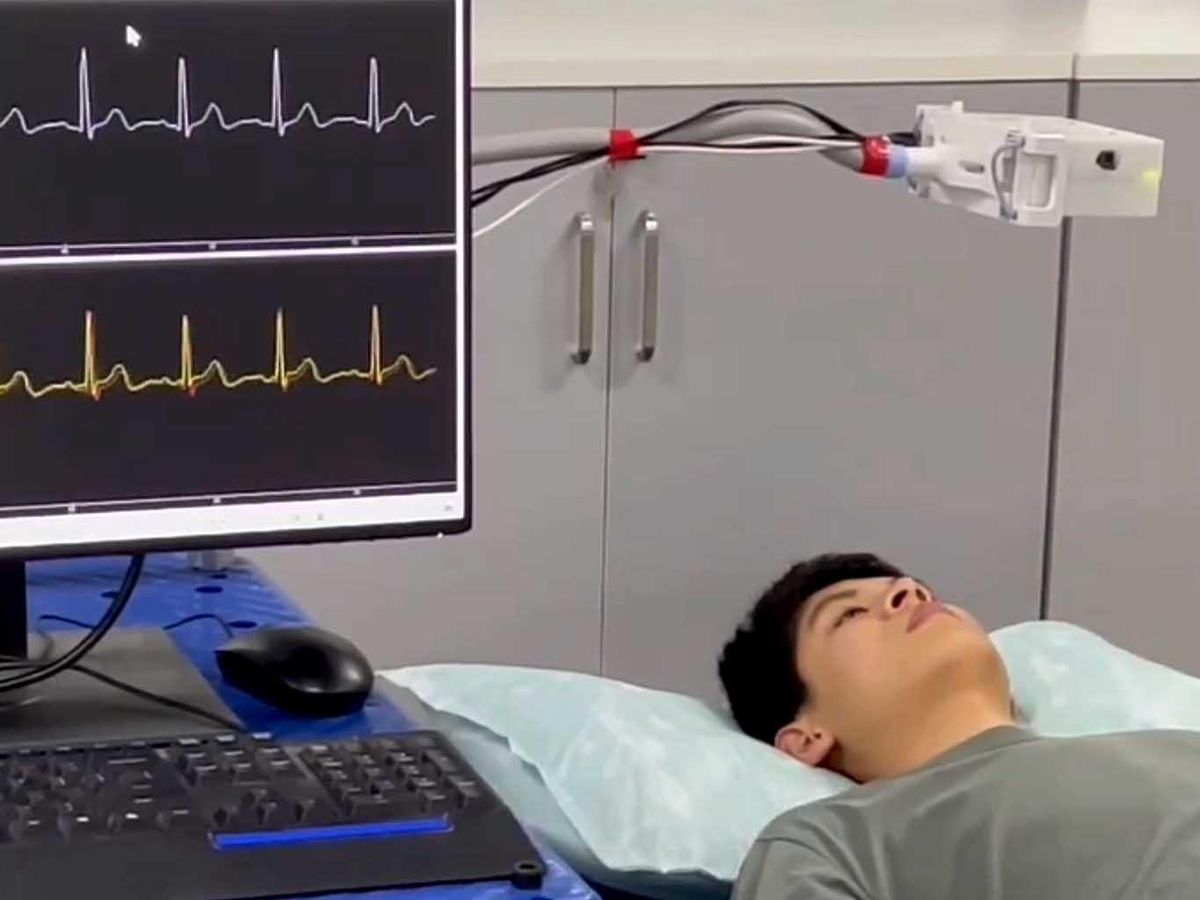This article is part of our exclusive IEEE Journal Watch series in partnership with IEEE Xplore.
More than 100 years after the technology was first developed, the electrocardiogram (ECG) remains the gold standard for measuring the electrical activity of the heart. However, an ECG currently requires the attachment of electrodes to a person’s skin. Even the latest consumer technologies like the Apple Watch require the user to touch the device’s protruding “digital crown” with a finger, which forms a circuit across the user’s body, thereby enabling the measurement of electrical signals across the heart.
However, researchers in China have reported the invention of a novel ECG technology that uses millimeter-wave radar and AI to infer an ECG signal, making the system completely contactless. Should the researchers’ initial promising results bear out, the millimeter-wave tech could inspire new applications based on a reliable and uninterrupted stream of heart health data.
“Experimental evidence has shown that many cardiovascular diseases could be better controlled and prevented through continuous monitoring and analysis of ECG,” explains Yan Chen, vice dean and professor at the School of Cyber Science and Technology at the University of Science and Technology of China. “However, the need to attach electrodes to the body during current ECG monitoring decreases people’s willingness to wear such devices for a long time, making those transient irregular ECG signals hard to detect.”
Chen experienced this firsthand when he needed ECG monitoring for 24 hours. “During that time, I was suffering from skin irritation where the electrodes were placed and was annoyed by my limited ability to move due to the electrode wires. This experience really makes me refuse to do another examination,” he says.
Inspired to find a better solution, Chen and his team used a commercial millimeter-wave-radar device that can detect the motions of the cardiovascular system in all three directions over time. He and his colleagues then developed a sophisticated AI algorithm that can use this mechanical activity to infer electrical activity.
Contactless Electrocardiogram Monitoring with Millimeter Radarwww.youtube.com
In their study, the researchers conducted 200 experimental trials involving 35 participants between the ages of 18 and 65. The radar device was placed between 0.4 and 0.5 meters above their bodies during four different physiological states—normal breath, irregular breath, post-exercise (specifically, after jumping jacks), and sleep—to simulate the common conditions in daily life.
After using the data to train and test their AI, the researchers found the approach had a median timing error of less than 14 milliseconds and a median morphology accuracy of 90 percent compared with that of a standard ECG with electrodes.
Chen emphasizes that the new approach using radar offers several advantages over the standard approach. “Our monitoring scenario neither requires users to take off their clothes nor requires them to attach a device or electrode to their bodies,” he says. “We believe this strength would effectively complement 24-hour continuous ECG monitoring.”
One limitation, however, is that the new approach is less accurate when a patient is randomly moving, which the research team plans to address in future work. This study involved healthy individuals as well, so the AI algorithm needs to be further trained to be applicable to people with specific underlying cardiovascular disease.
Nevertheless, Chen sees a lot of benefits in continuous, contactless ECG monitoring, and the team is seeking to commercialize their approach. “We plan to launch a product for in-home health care, where the elderly at high risk of heart disease require comprehensive status monitoring,” he says. “We believe that such new digital health tech will help people enjoy a healthier life.”
The researchers describe their work in a study published last month in IEEE Transactions on Mobile Computing.
- Forget Electrodes, the First EKG Machine Used Buckets of Saline Solution and Telephone Wire ›
- Can A Wrist-Wearable ECG Monitor Track Your Emotions? ›
- Apple Adds Electrodes to Turn Watch into Electrocardiograph ›
- Mayo Clinic Researchers Pump Up Wearable ECG Functions With AI ›
- Sea Turtle Ears Inspire a New Heart Monitor Design - IEEE Spectrum ›
- Wearable Device Tracks Skin Gas Levels - IEEE Spectrum ›
Michelle Hampson is a freelance writer based in Halifax. She frequently contributes to Spectrum's Journal Watch coverage, which highlights newsworthy studies published in IEEE journals.



